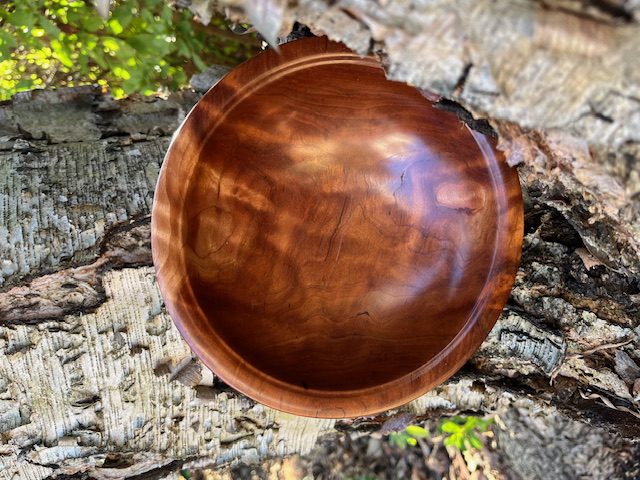We had a big windstorm here yesterday, and some windfalls–some respectably big branches and many, many twigs–in the yard. Windfall has its roots (no pun intended) in a custom of the medieval world. Peasants could not take anything from a lord’s land . . . unless the wind had blown it to the ground. So firewood and fruits and even nests of bird’s eggs that fell in windstorms were happy finds for the poor. Literally windfalls. Now we use the term metaphorically, especially in finance.
Not Always Metaphorical
As a worker of wood, I sometimes have been the beneficiary of a literal windfall. A close neighbor was resting in his hammock beneath an ancient wild cherry tree on his property. There was just enough breeze to sway in comfortably. He thought he heard a groan and then another, and he looked up. Far above, a huge limb was giving way. He leaped out of his hammock and scrambled away just as the giant limb crashed down.
After he collected himself and surveyed the wreckage, he saw that the great old tree was signaling its demise. And he had to have the tree cut down. Since it was so large, he asked me if I could use any of the wood. Old wild cherry? I went right over and got what I could. The pieces that had been left by the tree removal company weighed about 200 or 300 pounds each. It was magnificent wood. I took what I could.
Truly a Windfall
After a year of seasoning, I made some blanks. And after another little while, I turned a bowl.
(If you want to know about blanks: https://thelindenwoodstudio.com/from-blank-to-bowl/)
You never know what will be inside a blank. Turning it is like opening a gift. And what a gift this windfall cherry turned out to be. Rich grain, deep color, and most wonderfully of all, chatoyancy. Chatoyancy occurs in gems and sometimes in wood. It is the effect of light reflecting differently off inclusions (cavities or fibers) on the surface, creating a three-dimensional appearance.
The term comes from the French oeil de chat, meaning “eye of the cat.” Here is a good source if you are interested in learning how woods, and which woods, come to have chatoyancy: https://commercialforestproducts.com/chatoyancy-in-figured-wood/
One blank produced this bowl. You can see the chatoyancy well on the upper rim and just under it.

And another blank made a much bigger bowl.


